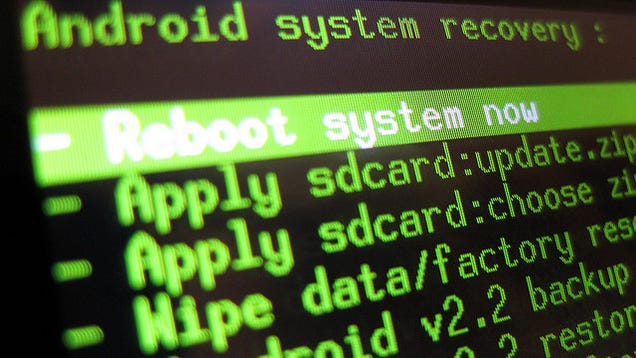ROOTING OF AN ANDROID PHONE
We love Android, but rooting your phone can give you the opportunity to do so much more than your phone can do out of the box—whether it's wireless tethering, speeding it up with overclocking, or customizing the look of your phone with themes.

What Is Rooting, Exactly?
Rooting, for those of you that don't know, means giving yourself root permissions on your phone. It's similar running programs as administrators in Windows, or running a command with"sudo" in Linux. With a rooted phone, you can run apps that require access to certain system settings, as well as flash custom ROMs to your phone, which add all sorts of extra features.
There are a ton of different Android phones out there, and while some rooting methods might work for multiple phones, there is no one-size-fits-all guide for rooting every phone out there.
Glossary of Rooting Terms

As you learn more about the rooting process, you'll probably run into a bunch of terms that can be confusing. Here are some of the most important ones and what they mean.
If there are any other terms you think we should add, let us know and we'll put them in!
Root:
Rooting means you have root access to your device—that is, it can run the
sudocommand, and has enhanced privileges allowing it to run apps like Wireless Tether or SetCPU. You can root either by installing the Superuser application or by flashing a custom ROM that includes root access.
ROM:
A ROM is a modified version of Android. It may contain extra features, a different look, speed enhancements, or even a version of Android that hasn't been released for your phone yet. We won't discuss ROMs in depth here, but if you want to use one once you're rooted, you can read more about doing that here.
Kernel:
A kernel is the component of your operating system that manages communications between your software and hardware. There are a lot of custom kernels out there for most phones, many of which can speed up your phone and increase your battery life, among other things. Be careful with kernels, though, as a bad one can cause serious problems with your phone and possibly even brick it.
Radio:
Radios are part of your phone's firmware. Your radio controls your cellular data, GPS, Wi-Fi, and other things like that. You can sometimes find custom radios for your phone that you can flash yourself, but beware as sometimes these can cause problems.
Flash:
Flashing essentially means installing something on your device, whether it be a ROM, a kernel, or a recovery (see below) that comes in the form of a ZIP file. Sometimes the rooting process requires flashing a ZIP file, sometimes it doesn't.
Brick:
To brick your phone is to break it during flashing or other acts. There is always a small risk with flashing, and if your phone becomes unable to function—that is, it basically becomes a brick—you've bricked your phone. The risk is very small, however, and more often than not people say "brick" when they really mean "it turns on but doesn't boot properly," which is a very fixable problem. See the FAQ below for more information.
Bootloader:
Your bootloader is the lowest level of software on your phone, running all the code that's necessary to start your operating system. Most bootloaders come locked, meaning you can't flash custom recoveries or ROMs. Unlocking your bootloader doesn't root your phone directly, but it does allow you to root and/or flash custom ROMs if you so desire.
Recovery:
Your recovery is the software on your phone that lets you make backups, flash ROMs, and perform other system-level tasks. The default recovery on your phone can't do much, but you can flash a custom recovery—like ClockworkMod or TWRP—after you've unlocked your bootloader that will give you much more control over your device. This is often an integral part of the rooting process.
Nandroid:
From most third-party recovery modules, you can make backups of your phone called nandroid backups. It's essentially a system image of your phone: Everythingexactly how it is right now. That way, if you flash something that breaks your phone, you can just flash back to your most recent nandroid backup to return everything to normal. This is different from using an app like Titanium Backup that just backs up apps and/or settings—nandroid backups backup the entire system as one image. Titanium backups are best when switching between ROMs or phones.
ADB:
ADB stands for Android Debug Bridge, and it's a command line tool for your computer that can communicate with an Android device you've connected to it. It's part of the Android Software Developers Kit (SDK). Many of the root tools you'll find use ADB, whether you're typing the commands yourself or not. Unless the instructions call for installing the SDK and running ADB commands, you won't need to mess with it—you'll just need to know that it's what most of the tools use to root your phone.
S-OFF:
HTC phones use a feature called Signature Verification in HBOOT, their bootloader. By default, your phone has S-ON, which means it blocks you from flashing radio images—the code that manages your data, Wi-Fi, and GPS connections. Switching your phone to S-OFF lets you flash new radios. Rooting doesn't require S-OFF, but many rooting tools will give you S-OFF in addition to root access, which is nice.
RUU, SBF, and OPS:
ROM Upgrade Utilities (for HTC phones), System Boot Files (for Motorola phones), and OPS and PIT files (for Samsung phones) are files direct from the manufacturer that change the software on your phone. RUU and SBF files are how the manufacturers deliver your over-the-air upgrades, and modders often post leaked RUU and SBF files for flashing when the updates haven't been released yet. They're also handy when downgrading your phone, if a rooting method isn't available for the newest software version yet. You can flash RUUs right from your HTC phone, but Motorola users will need a Windows program called RSD Lite to flash SBF files, and Samsung users will need a tool called Odin to flash OPS and PIT files (note there is a specific version of Odin for each device).
Where to Find Rooting Methods and Tools

So now we get to the good stuff: actually rooting your phone. Unfortunately, every single phone is different, and rooting methods change every time that phone's software updates. With so many Android phones out there, it's become impossible for us to actually list rooting instructions here—especially because we only own a few different phones ourselves.
Luckily, now that you know a thing or two about rooting, you're in a much better position to understand some of the other instructions out there. So, here are a few places you'll find guides, ROMs, and other information about rooting your specific phone.
The XDA Developers forums:
are the number one place to look for information on your phone. This is where all the best hackers and tweakers gather to discuss phones, share links and guides, create rooting tools, and more. Head to the forums, find your device, and poke around the different subforums for your phone. You should find a number of threads that will direct you to information on how to root your phone, what ROMs and kernels are available, and more. And, when in doubt, ask the other users!
The Phandroid forums:
(aka Android Forums) aren't quite as popular as XDA, but they have always done a pretty good job of organizing information on rooting. This is a good place to start. Head to the forum for your device and look for the "All Things Root" subforum.
RootzWiki may not be as popular as it once was, but there's still good information to be had on these forums, especially pertaining to new ROMs, kernels, and other things on the development side.
RootzWiki may not be as popular as it once was, but there's still good information to be had on these forums, especially pertaining to new ROMs, kernels, and other things on the development side.
The CyanogenMod Wiki:
CyanogenMod, one of the most popular ROMs out there, has a fantastic wiki with a ton of information on different devices. Even if you don't plan on flashing CyanogenMod (or any ROM, for that matter), you can often find information on how to root your phone within their device-specific instructions on installing CyanogenMod, so it's worth checking out.
Try any or all of the above sources and see what you can find. Once you've found the forum for your phone, search around for a rooting guide or rooting tool. Make sure it's applicable to your current software version and try it out. If you have any questions, you can ask in the forums—but be sure to read as much as you can before doing so, since your question has probably already been answered elsewhere.
Armed with the knowledge in this glossary and FAQ, along with the right rooting method on those forums, you should be well on your way to a better phone. Good luck!
Comments
Post a Comment